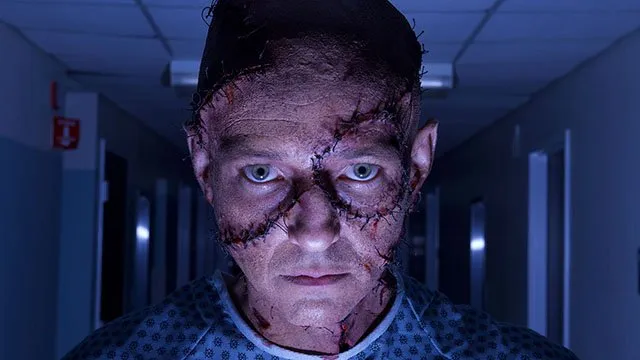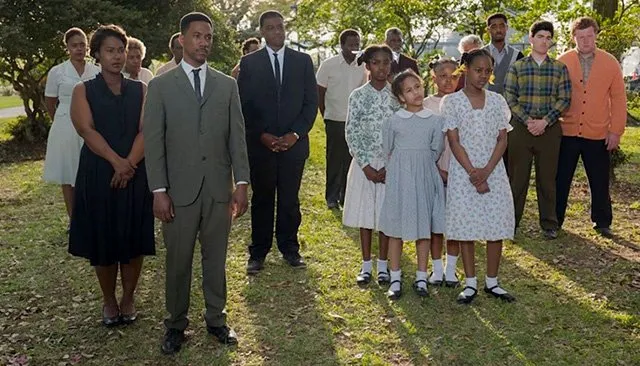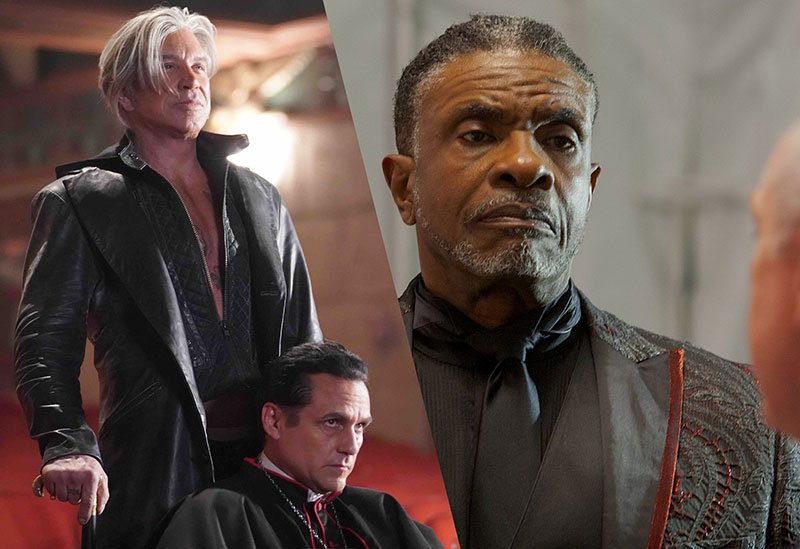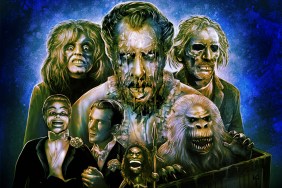This year’s Fantasia Film Festival in Montreal kicked off with a double dose of anthology movie madness, so we’re taking a look at both the Mick Garris-produced omnibus Nightmare Cinema as well as Tales From the Hood 2, the sequel to Rusty Cundieff’s 1995 cult classic Tales From the Hood.

NIGHTMARE CINEMA
First up is Nightmare Cinema, a kind of companion piece to the work producer Mick Garris did on the Showtime series Masters of Horror. While that show allowed different horror directors the opportunity to make near-feature-length films with zero restraints on content or gore, Nightmare Cinema reigns the filmmakers in slightly with shorter segments and its framing device of The Projectionist (Mickey Rourke, clearly shooting most of his material in a day) displaying each short as a record of the respective main characters’ deaths. As with any film of this ilk, some segments will be better than others. Here’s a rundown of each one…
The Thing in the Woods (director: Alejandro Brugués)
It’s almost unfortunate that this is the film that kicks things off, since Brughe (Juan of the Dead) unquestionably walks away with the whole film. What starts as being caught up in the middle of a typical slasher story in which final girl Samantha (Sarah Elizabeth Withers) is running from a blowtorch-wielding masked maniac evolves seamlessly into a Scream-like parody and then shifts again into something wholly different and surprising. This is the most fun and lively segment in the whole picture, which makes the ones that follow pale in comparison.
Mirare (director: Joe Dante)
After having upstaged the big boys with his own killer segment in Twilight Zone: The Movie three decades ago, Dante (Gremlins, The Howling) gets back into anthology mode for a well-crafted but somewhat standard horror story about a scarred woman named Anna (Zarah Mahler) who decides to do something about the ugly scar on her face she has an unhealthy preoccupation with. Encouraged by her fiancée to do something about it so she’ll feel better about herself, she decides to go under the knife with what turns out to be a psychotic plastic surgeon played with a delightfully creepy flavor by none other than Richard Chamberlain. It all comes to a conclusion that any fan of EC Comics’ “Tales From the Crypt” will see coming a mile away, but has its charms nonetheless.
Mashit (director: Ryûhei Kitamura)
Japanese genre favorite Kitamura (Versus, Godzilla: Final Wars, Midnight Meat Train) makes a visually compelling but fatally clichéd possession movie set in a Latin Catholic school in which a demon runs amuck, leading the head priest and the nun he likes to have sex with to a gore-soaked showdown. It’s over-the-top, but not in a way that is nearly as clever or subversive as it thinks it is.
This Way to Egress (director: David Slade)
After years of working in the (admittedly lucrative) world of genre television (Hannibal, American Gods, Black Mirror), David Slade finally returns to film with this black and white existential horror piece that chases a sense of unease rather than shocks. It follows a woman (Elizabeth Reaser) as she navigates what turns out to be some kind of purgatory world with her two young kids in tow. This is a smart change both visually and tonally from the other segments that gives Nightmare Cinema the breadth that Garris likely envisioned when wrangling the project together. It’s also a welcome return of the brilliant filmmaker behind Hard Candy and 30 Days of Night.
Dead (director: Mick Garris)
Sadly, Garris (The Shining TV movie, The Stand) can’t quite stick the landing with his own final segment, which he admits is a much more straightforward, standard ghost yarn about a young piano prodigy (Faly Rakotohavana) being pursued by a psychopath across the afterlife for… reasons.
Altogether the five segments of Nightmare Cinema, as well as the framing device, add up to a mixed bag that might best be experienced depending on the viewer’s horror sensibilities. If its gory fun you want the first two segments should satisfy, while Slade brings a more elevated sensibility to the proceedings, with the third and fifth segments being the runt of the litter.

TALES FROM THE HOOD 2
Like their predecessor, original Tales From the Hood writer/director Rusty Cundieff (Fear of a Black Hat) and his co-writer/producer-turned-co-director Darin Scott (Deep Blue Sea 2) present four social-relevant horror stories, each with their own particular flavor, with the great Keith David (The Thing, They Live) replacing Clarence Williams III as master of ceremonies in the wraparound this time out. Here’s a rundown of each segment…
The first involves a shallow young white girl taking her equally-ditsy black female friend to a museum displaying racist depictions of African Americans in post-Civil War America. The white girl is obsessed with buying a Golliwog doll on display, even though the intense proprietor of the museum tells her it’s not for sale, and only evil will come of her owning it. She convinces her friends to return and help her break into the museum and steal the doll, and of course things don’t pan out well for any of them. This was a solid segment to start off the proceedings, just silly and outrageous enough without going for the jugular, all while setting the politically-conscious tone.
The second piece, and easily the most entertaining, involves a drug dealer and his associates who brutally beat a former-pimp-turned-black-community-leader in order to learn where he’s hiding his money. When he’s accidentally killed during the interrogation, they decide to enlist the help of a TV psychic and total fraud (played by Mad Men‘s Bryan Batt) to reach out to the dead man in the afterlife. The gambit has unexpected and hilarious results.
The third segment is a bit of a throwaway about two rape bros posing as movie producers from Marvel in order to drug and have sex with two hot models who –surprise!- turn out to be vampires. This is an overly simplistic segment barely tied in with Me Too ideals, with an obvious twist and poor execution. For example, it’s established in one scene that the two girls can’t be seen on camera, and then later they appear on a video message.
The final piece takes a somber tone about a contemporary black Republican political operative named Henry (an outstanding Kendrick Cross) in the deep south whose pregnant white wife is haunted by visions of slain Civil Rights icon Emmett Till. It seems Emmett is upset upset that Henry is supporting a white Republican candidate trying to shut down voting locations in black neighborhoods across the state in order to ensure his election. This is the most charged and relevant piece, and probably the one that will linger in audiences minds the most after seeing the film.
Tales From the Hood 2‘s wraparound segment involves a douchey white guy who has made a fortune operating prisons across the country who employs Keith David’s Portifoy Simms to help program a policing robot by telling it stories. It’s a bizarre and hokey premise that never reaches the heights of absurdity the filmmakers intended. Overall the film (once again produced by Spike Lee) uses the horror genre to impart progressive morality tales, but its cheapness and on-the-nose techniques often make it feel weirdly akin to the worst kind of right wing agitprop (think An American Carol). The film has its heart in the right place, but won’t win any points for subtlety.










